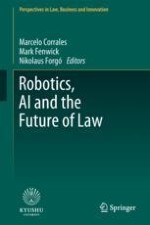2018 | OriginalPaper | Buchkapitel
Artificial Intelligence and Collusion: A Literature Overview
verfasst von : Steven Van Uytsel
Erschienen in: Robotics, AI and the Future of Law
Verlag: Springer Singapore
Aktivieren Sie unsere intelligente Suche, um passende Fachinhalte oder Patente zu finden.
Wählen Sie Textabschnitte aus um mit Künstlicher Intelligenz passenden Patente zu finden. powered by
Markieren Sie Textabschnitte, um KI-gestützt weitere passende Inhalte zu finden. powered by
